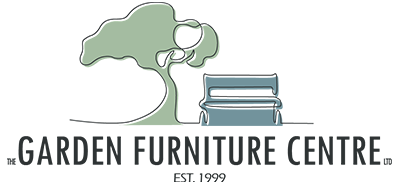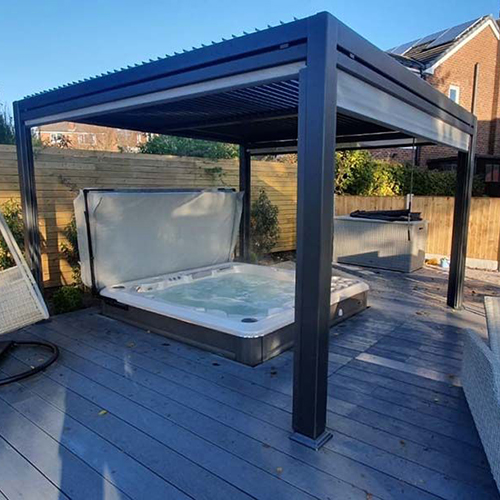Medieval & Monastic Tudor Victorian Modern
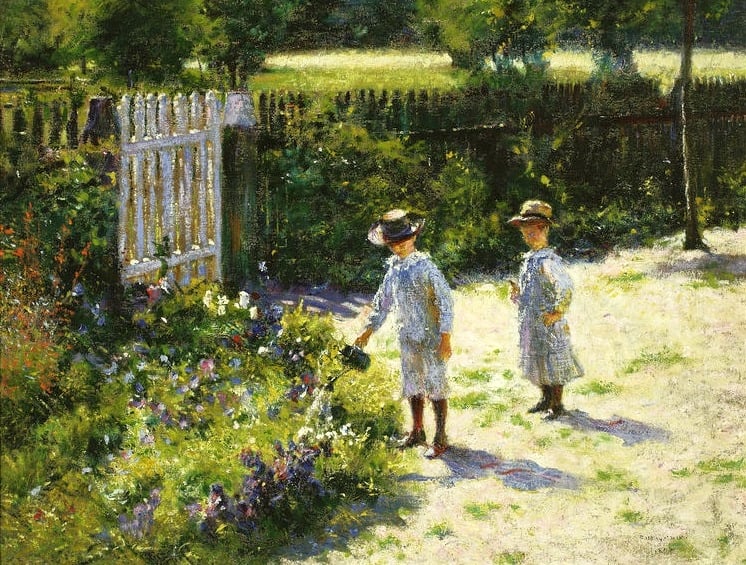 Children Gardening
Children GardeningA History of English Gardens
The English garden has long been quintessential to our culture. Simply take a stroll down any road and you’re sure to see the classic English garden
With that being said, it surprising that the history of the English Garden is not as well-known as it perhaps should be. It’s a truly interesting history that we’d like to share with you all.
The earliest examples of gardens were made by the Romans after the Claudian invasion in 43CE. The Romans built extraordinary palaces accompanied by Palace ‘gardens. The gardens had great influence from the East Mediterranean and West Asia, combining hedges, walls and fences with orchards, frescos and colonnaded verandas.
A great example of the Romano-British garden is Fishbourne Roman Place in Sussex, where an early garden has been party reconstructed.
It’s not until the middle ages that the English Gardens reappeared, there is little known about the garden of Anglo Saxon England, it’s been suggested that this is because they didn’t have the passion for gardening that the Romans had.
Medieval & Monastic Gardens
Monasteries took advantage of the ‘garden;’ and often had both kitchen and herb gardens to provide both food and medicine. Early Monastic established followed ground plans that derived from the Roman villas. This involved colonnaded courtyards and cloister gardens.
Cloister gardens were enclosed with a fountain or statue at the centre. Better described on Wikipedia it reads ‘A cloister (from Latin claustrum, "enclosure") is an open space surrounded by covered walks or open galleries, with open arcades on the inner side, running along the walls of buildings and forming a quadrangleor garth.’
Medieval castles occasionally made room for courtyard gardens. These usually consisted of raised flower beds with paths running through them. Seats were improvised and made from turf. Gardens were often enclosed with wattle fences and quickthorn hedges.
Where Can I See Gardens With Medieval Features?
Not many gardens have been preserved from this period but there are individual features that have stood the test of time, many of them can be found in The National Trust Gardens
http://www.nationaltrust.org.uk/
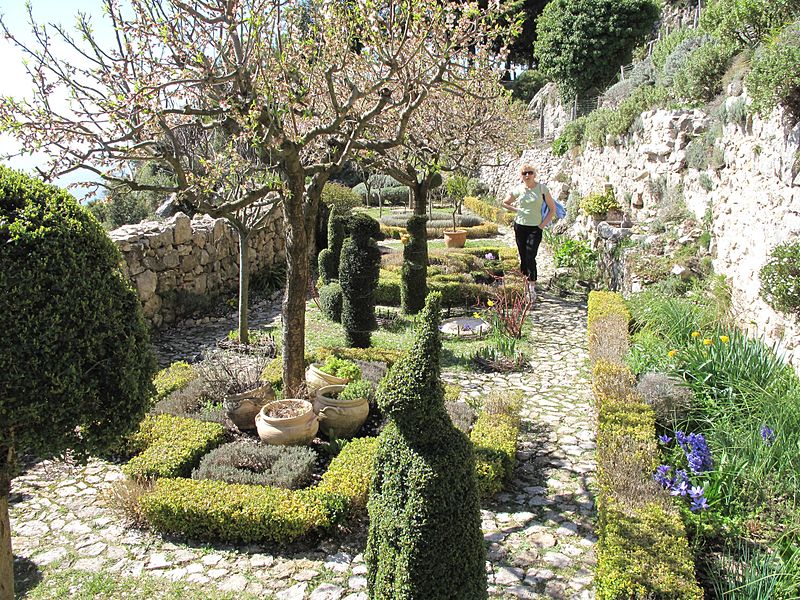 A Medieval inspired garden in saint Agnes, France.
A Medieval inspired garden in saint Agnes, France.Tudor Gardens
Tudor gardens were a lot more proportional than those of the Medieval period, they had a lot of influence from Italy. Gardens mirrored the alignment of the houses keeping everything rather uniform and in line. Once more, sundials and statues made an appearance, having been left out since the Roman Gardens.
Quick Fact: Henry VIII had a particular liking for sundials.
The most prominent contribution from the Tudor was of course the Knot Garden.
Knot gardens consisted of geometric or square patterns of hedges filled with flowers, hedges and herbs. They were designed to be viewed from a higher level such as a raised walk to allow you to view the whole pattern.
Gardening under King Henry VII became a Kingly pass time once King Henry VIII was crowned king in 1491. Henry claimed that any sign of ostentation was a threat to the crown.
Thomas Wolsey’s Hampton Court was soon to be one of Henrys favourite places. In 1529 the king began the renovation of the court which carried on for 10 years. Hampton court is well known for its beautiful gardens and is now a very popular destination for tourists to view the fabulous build and gardens.
Raised beds, mazes, turf seats and fountains were some of the wonderful designs that featured in the Tudor gardens along with many designs inherited from the Medieval gardens.
Fortunately this is another of the gardens and buildings you can visit http://www.hrp.org.uk/HamptonCourtPalace/
During the 16th and 17th century there was an influx of exotic and rare plants along with some of our favourites today; snowdrops lavender and marigolds.
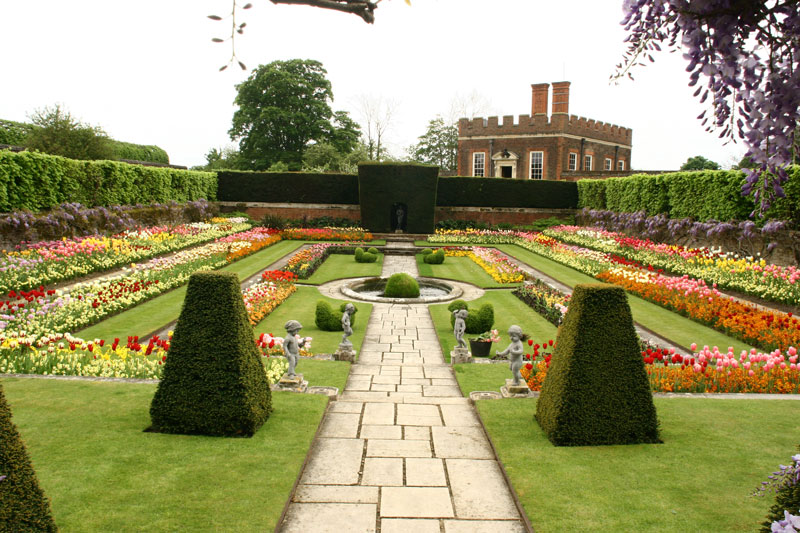 One of Hampton Courts Sunken Gardens
One of Hampton Courts Sunken Gardens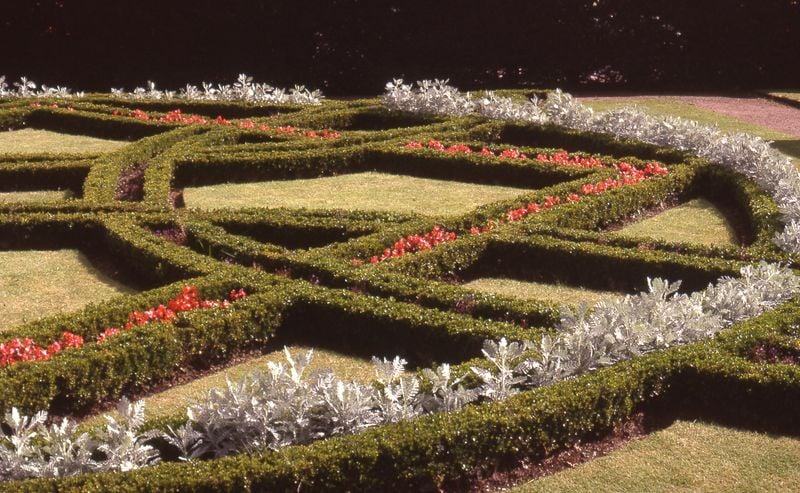 An example of a Knot Garden
An example of a Knot GardenVictorian Gardens
The age of the industrial revolution also bought with it the boom in gardening. The interest in gardening exploded and for the first time authorities felt the need to provide extensive public gardens. It was hoped that these gardens would improve the etiquette and manners of the lower classes.
Gardens features massed beds of flowers, intricate designs and beautiful bright colour from plants from all corners of the world. Rockeries made a firm appearance as expeditions to mountains increased.
The true cornerstone of the Victorian gardens was order and neatness, with a pristinely kept lawn.
Italian influences also made a return along with Parterres, which looked incredibly similar to the popular Knot gardens of the Tudor times.
Some of the most influential gardeners at this time were J.C Loudon and Joseph Paxton. Later into the 19th century, writer William Robinson had a big influence on gardening and his preference for ‘wild gardens’ was reflected in many gardens.
Here are some of the most beautiful Victorian gardens that you can visit today along with some more information on the gardens of this Era
http://www.nationaltrust.org.uk/article-1356400599248/
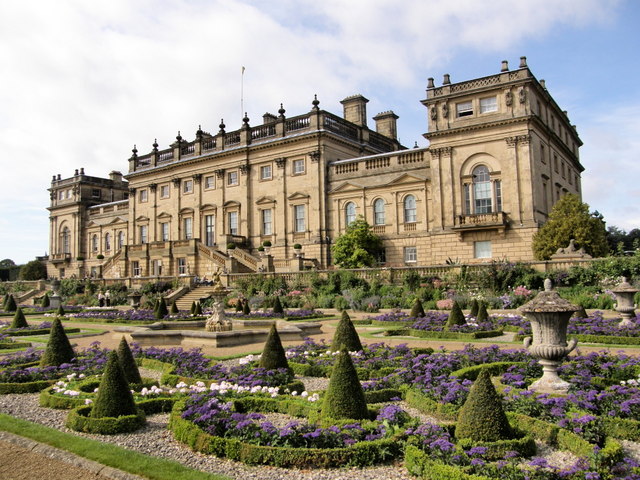 © Copyright R J McNaughton This formal Victorian terrace garden was laid out by Sir Charles Barry in the 1840s for the then Countess of Harewood.
© Copyright R J McNaughton This formal Victorian terrace garden was laid out by Sir Charles Barry in the 1840s for the then Countess of Harewood.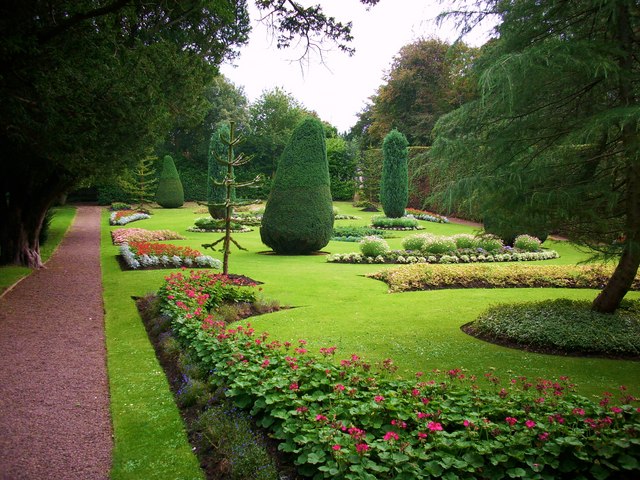 © Copyright Liz 'n' Jim
© Copyright Liz 'n' JimModern Gardens
Gertrude Jekyll is the woman we can thank for the wonderful herbaceous border and colour schemed gardens. Arguably, she is the most influential gardener of 20th century England. Her ideas built on the traditional Cottage gardens, which were popular in the 1890’s and featured a mixture of ornamental and edible plants along with dense plantings, fruit trees, trellises and walls.
If you would like to experience her work it still stands at Marsh Court and Hestercombe
Everyone has their own take on gardening and it all comes down to personal taste in the 21st Century. There is a huge array of influences in English gardens today and no matter whether large and small, private or public, exotic or traditional they illustrate the passion the British have for creating beautiful spaces of their own. All are unique and all have their own individual personalities with a story to tell.
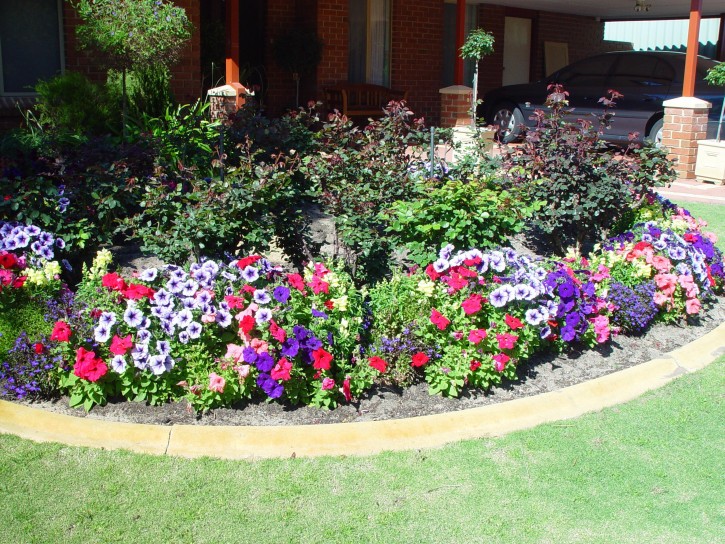 Modern garden with herbaceous flower bed
Modern garden with herbaceous flower bed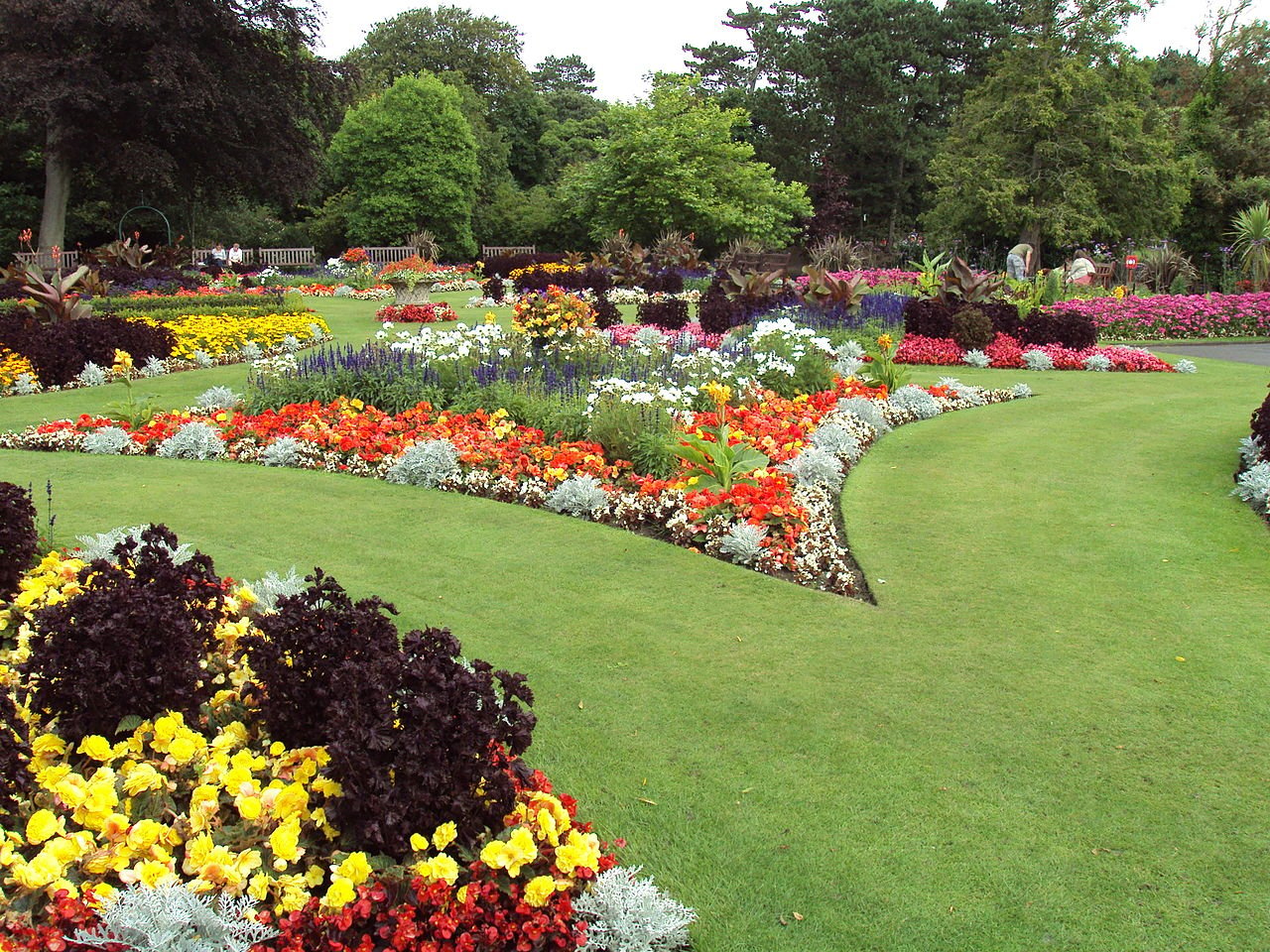 Modern garden still influence by Victorian style
Modern garden still influence by Victorian stylePhoto by: Rept0n1x
Sources:
www.britainexpress.com/History/English-gardens
www.harrywoolner.wordpress.com
www.gardenhistorymatter.com
